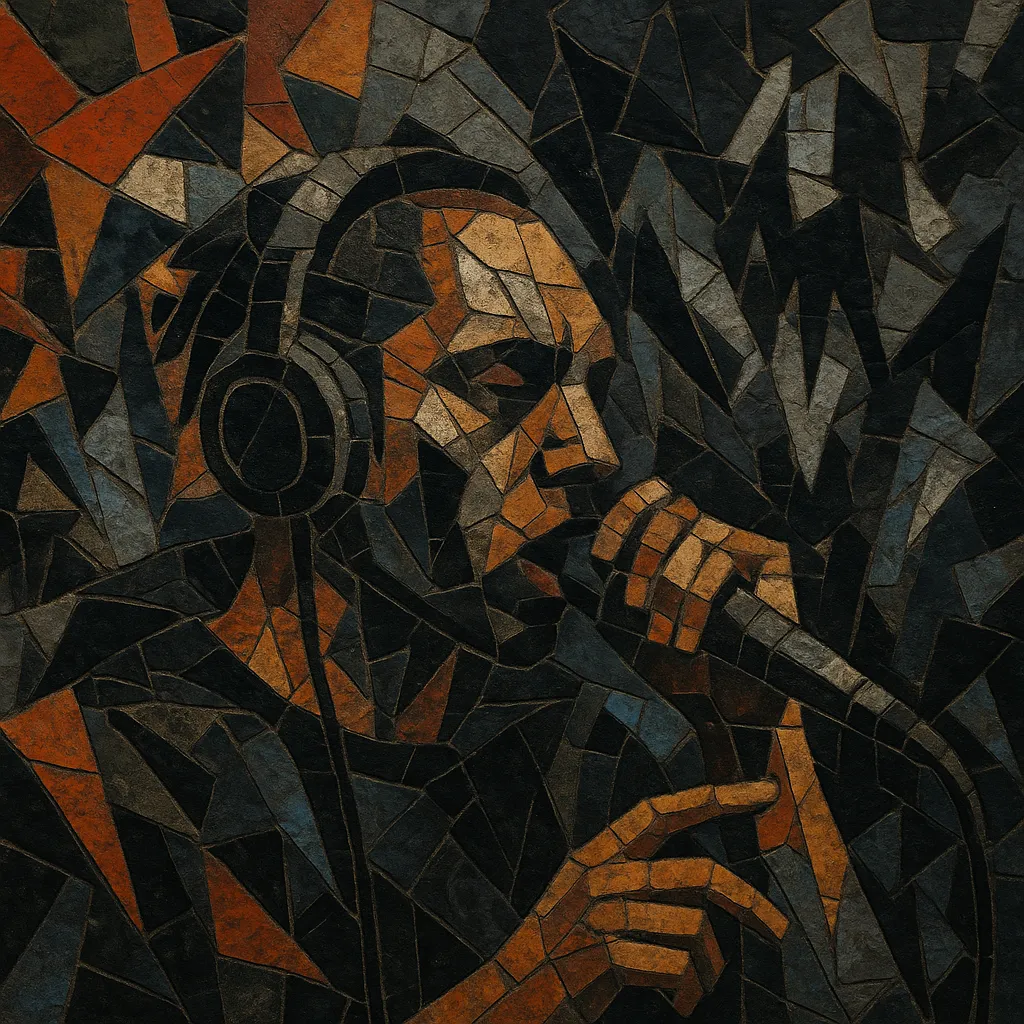Experimental hip hop (often called avant-rap or left-field hip hop) pushes rap beyond conventional song forms, sound palettes, and production techniques. It hybridizes boom‑bap and contemporary hip hop rhythms with ideas from industrial, noise, IDM, electroacoustic music, and free jazz, favoring timbral risk‑taking, collage, and abstraction over radio‑oriented polish.
Producers and MCs in this style disrupt expectations with unusual meters, asymmetric loops, microtiming, extreme dynamics, and heavy sound design (distortion, granular and spectral processing, tape manipulation). Vocals may range from conventional rapping to spoken word, chant, screams, or heavily processed deliveries. The result foregrounds texture, mood, and concept as much as groove and lyrical content.
Experimental hip hop cohered in the 1990s United States as underground artists and indie labels embraced the sampler not just as a beat tool but as an instrument for collage and noise. The New York and Bay Area scenes, alongside UK experimental circles, folded industrial, noise, and IDM textures into rap frameworks. Early touchpoints include the dense, abrasive approaches of industrial hip hop and abstract/alternative hip hop communities that questioned radio formats and prioritised sonic experimentation.
The 2000s saw a surge of boundary‑pushing acts and collectives exploring abstraction, spoken word, and fragmented song forms. Parallel to this, the LA beat scene and kindred experimental producers advanced head‑nod rhythms with unstable meters, maximal/minimal sound design, and jazz‑inflected harmony. Netlabels, forums, and boutique imprints amplified cross‑pollination with experimental rock, electroacoustic music, and sound art.
A new wave foregrounded harsh distortion, screaming deliveries, and stark minimalism, bringing noise and industrial timbres into rap’s core grammar. Internet distribution (Bandcamp, SoundCloud) enabled rapid iteration: artists blended glitch, deconstructionist club sensibilities, and hyper-detailed sample work, influencing adjacent scenes from post‑dubstep to hyperpop and trap metal while nudging mainstream pop/rap toward stranger textures.
Contemporary experimental hip hop freely merges club deconstruction, granular resynthesis, ambient/drone, and jazz harmony with trap or boom‑bap scaffolds. Albums often function as conceptual art—interrogating identity, politics, media saturation, and technology—while live shows adopt performance‑art elements, custom visual systems, and noise‑forward sound reinforcement.


